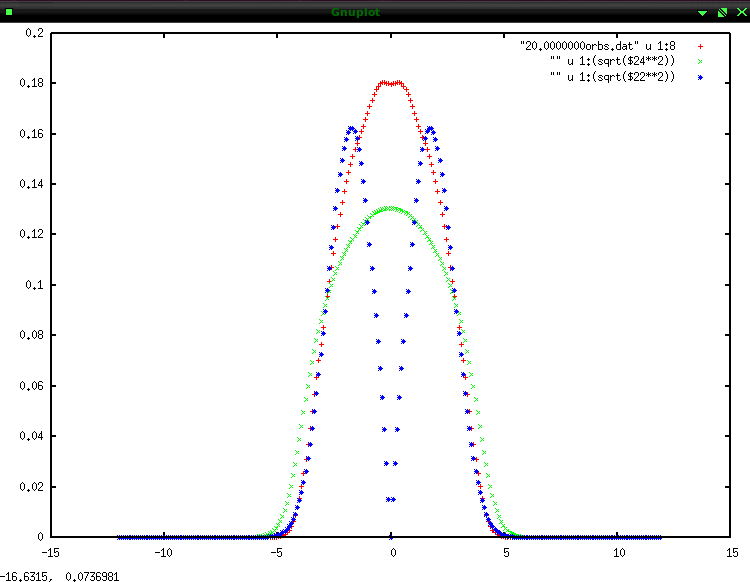Next: Computing the Time-Evolution of Up: An MCTDH-X Tutorial Previous: An MCTDH-X Tutorial Contents
source ~/.mctdhxrc ls $MCTDHXDIR. Now you should see the executables MCTDHX_<compiler>, MCTDHX_analysis_<compiler> and the library libmctdhx.so. If you don't, the installation did not terminate correctly and you should check what went wrong (see the log files created in ./log/ ) and contact the developers in case you cannot find out or fix the error.
To get started, it's best to create a directory for the tutorial computations:
mkdir ~/MCTDH-X-Tutorial cd ~/MCTDH-X-Tutorial. To copy all necessary files to run the computation in this directory, we make use of the alias inpcp and libcp which copy the example inputs MCTDHX.inp, analysis.inp and the dynamic library libmctdhx.so to the current directory.
libcp inpcp ls. The ls command should show a list including MCTDHX.inp, analysis.inp, and libmctdh.so. With these three files, we're able to run the main and analysis programs. The default MCTDHX.inp is configured to compute the eigenstate of
gedit ./MCTDHX.inp. Since we're going to compute some dynamics later, we use the opportunity to also enlarge the number of grid points and the grid extension in the DVR_Parameters namelist (a bit further down in the MCTDHX.inp file). We set:
Npar = 50 NDVR_X = 256 x_initial = -12.d0 x_final = 12.d0. With these adjustments made, we can run the relaxation to the groundstate of the harmonic oscillator potential by typing
MCTDHX. This should show an output similar to the following figure 1. This computation is going to take a minute so sit back and relax or just get a coffee, until it finished. The energy you should see on screen in the final propagation step should be identical to 259.14031953. To visualize the output, let's use gnuplot:
mctdhx_gnuplot plot "20.0000000orbs.dat" u 1:8, "" u 1:(sqrt($24**2)), "" u 1:(sqrt($22**2)). The plot command visualizes the density
 |
tail -n 1 NO_PR.out. We get
which is the time ![]() , the natural occupations
, the natural occupations
![]() and the energy of the system
and the energy of the system ![]() , in the final column (see also table 11 for the structure of the NO_PR.out file). We conclude that despite the strong interactions of
, in the final column (see also table 11 for the structure of the NO_PR.out file). We conclude that despite the strong interactions of
![]() , our eigenstate of the
, our eigenstate of the ![]() bosons in the harmonic confinement is close to condensed, since
bosons in the harmonic confinement is close to condensed, since ![]() of the bosons sit in the lowest single-particle state. In the single-well, this absence of fragmentation in the groundstate is anticipated. There is, however, numerous examples on the emergence of fragmentation in the dynamics of ultracold bosonic systems. To see the occurence of fragmentation, it's therefore instructive to change the potential in which our eigenstate was computed and trigger some dynamics.
of the bosons sit in the lowest single-particle state. In the single-well, this absence of fragmentation in the groundstate is anticipated. There is, however, numerous examples on the emergence of fragmentation in the dynamics of ultracold bosonic systems. To see the occurence of fragmentation, it's therefore instructive to change the potential in which our eigenstate was computed and trigger some dynamics.
Back to http://ultracold.org